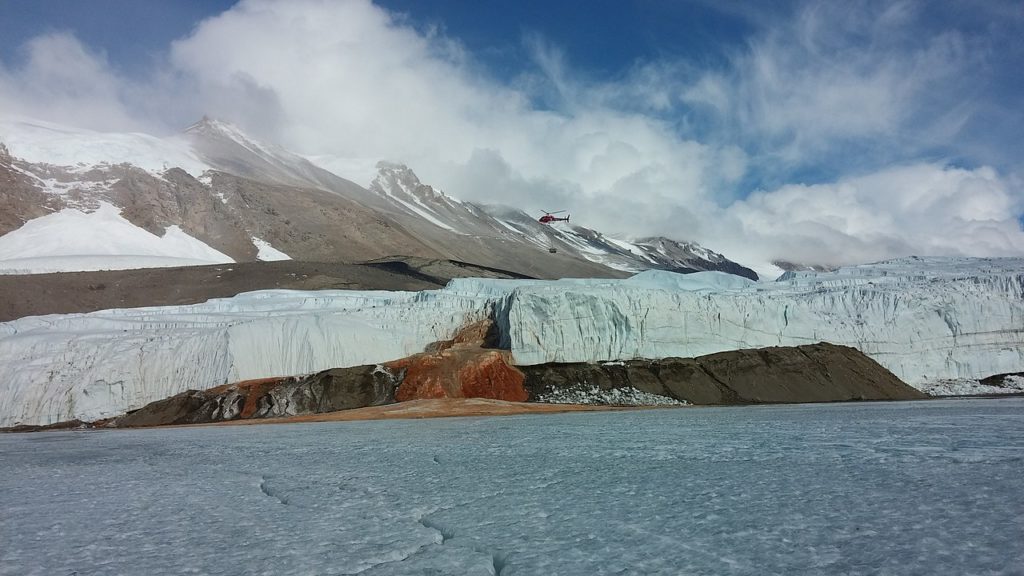Iron-rich hyper-saline water sporadically emerges from small fissures in the ice cascades. The saltwater source is a subglacial pool of unknown size overlain by about 400 meters of ice several kilometers from its tiny outlet at Blood Falls.

The reddish deposit was found in 1911 by the Australian geologist Thomas Griffith Taylor, who first explored the valley that bears his name. The Antarctica pioneers first attributed the red color to red algae, but later it was proven to be due to iron oxides.

Poorly soluble hydrous ferric oxides are deposited at the surface of ice after the ferrous ions present in the unfrozen saltwater are oxidized in contact with atmospheric oxygen. The more soluble ferrous ions initially are dissolved in old seawater trapped in an ancient pocket remaining from the Antarctic Ocean when a fjord was isolated by the glacier in its progression during the Miocene period, some 5 million years ago, when the sea level was higher than today.

Unlike most Antarctic glaciers, the Taylor Glacier is not frozen to the bedrock, probably because of the presence of salts concentrated by the crystallization of the ancient seawater imprisoned below it.

Evolving independently of the rest of the living world, microbes in the falls exist in a place with no light or free oxygen and little heat, and are essentially the definition of “primordial ooze.”
The existence of the Blood Falls ecosystem shows that life can exist in the most extreme conditions on Earth. Though tempting to make the connection, it does not prove, however, that life could exist on other planets with similar environments and similar bodies of frozen water—notably Mars and Jupiter’s moon Europa—as such life would have to arise from a completely different chain of events.
Even if it doesn’t confirm the existence of extraterrestrial life, Antarctica’s Blood Falls is a wonder to behold both visually and scientifically.
According to the Wikipedia















